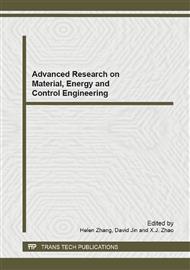p.3
p.7
p.11
p.15
p.18
p.22
p.27
p.31
The Research on the Corrosion Inhibition Rate of CTAB Combined with Sodium Silicate on the Q235 and 316L Steel
Abstract:
In this paper the corrosion inhibition of cetyl trimethyl ammonium bromide (CTAB) combined with sodium silicate on the Q235 and 316L steel were investigated. The results showed that CTAB has a higher corrosion inhibition rate but the cost is higher also. In order to lower the cost, the sodium silicate was combined with CTAB to be corrosion inhibitor. The Results showed that once the CTAB was combined with sodium silicate, there would be a synergistic effect between sodium silicate and CTAB. The corrosion inhibition rate could be greater than 80%. Especially when the concentration ratio of CTAB to sodium silicate was 0.02g/L:2.00g/L, the corrosion inhibition rate for the 316L and Q235 could be up to 87.04% and 91.03% respectively.
Info:
Periodical:
Pages:
7-10
Citation:
Online since:
January 2013
Authors:
Price:
Сopyright:
© 2013 Trans Tech Publications Ltd. All Rights Reserved
Share:
Citation:


